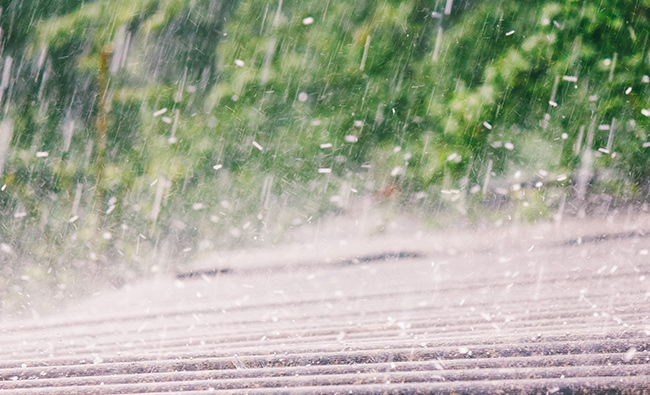
Key Takeaways
- Prompt roof inspections after hailstorms are essential to identify damage early and prevent costly issues such as leaks and mold growth.
- Common signs of hail damage include dents, cracks in shingles, missing shingles, and damage to gutters and vents; checking for this should be included in any inspection routine.
- Professional roofing contractors offer expert evaluations of hail damage, and homeowners should document any damage for insurance claims to ensure fair compensation.
Understanding Hail Damage
Hail damage can severely affect the appearance and functionality of your roofing materials, sometimes necessitating complete roof replacement. Prompt inspection after a hailstorm is crucial to identify damage early and prevent further issues such as leaks and mold. Ignoring hail damage can lead to significant roof damage, water leaks, and mold growth, which are far more costly and damaging in the long run.
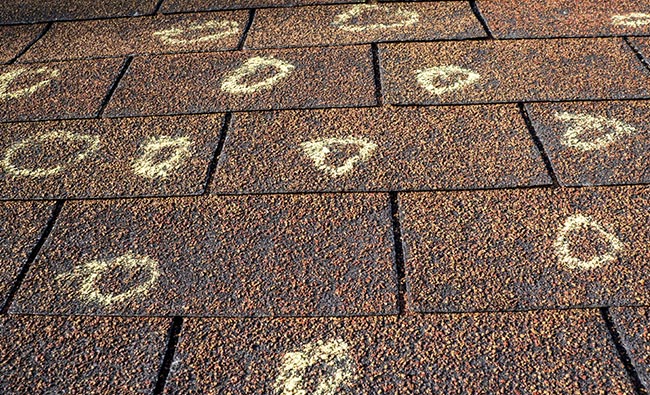
Hailstones can crack shingles and create holes, allowing moisture to compromise the roof’s integrity. Homeowners and property owners should be aware that hail can lead to significant damage, requiring immediate roof inspections. Recognizing these impacts is the first step in effectively managing and mitigating hail damage.
What Causes Hail Storms?
Hail forms as small hail nuggets that grow larger as they move up and down within thunderstorm clouds. The updrafts within these clouds carry the hailstones upward, adding layers of ice each time they rise and fall until they become too heavy for the updrafts to support, leading them to fall to the ground. A hail storm typically occurs during severe thunderstorms with strong winds that facilitate the formation and growth of hailstones, which can reach damaging sizes of one inch or larger.
Even small hailstones can cause significant hail damage to vulnerable areas like shingles, gutters, and vents, especially roof damage. The largest recorded hailstone in Colorado had a diameter of 4.83 inches, demonstrating the potential for severe damage.
Comprehending the formation and impact of hailstones underscores the seriousness of storm damage and the need for timely inspections.
Common Signs of Hail Damage
Common signs of hail damage on roofs include:
- Dents
- Cracks in shingles
- Missing shingles
- Torn flashing
Homeowners might notice visible dents and potential leaks after larger hail impacts a roof. Hail damage can weaken shingles, leading to leaks and further damage if not promptly addressed. Visual signs of hail damage on shingles include knocked-off surface granules and damage from impact.
Dents can also be found on gutters, gutter screens, and downspouts, suggesting hail damage. Additionally, roof vents and other roof components like flashing and metal valleys may show signs of dents or damage from hail impact.
Inspecting siding and windowsills for dents or dings can also indicate hail damage and should be included in your inspection routine.
Conducting a Hail Damage Roof Inspection
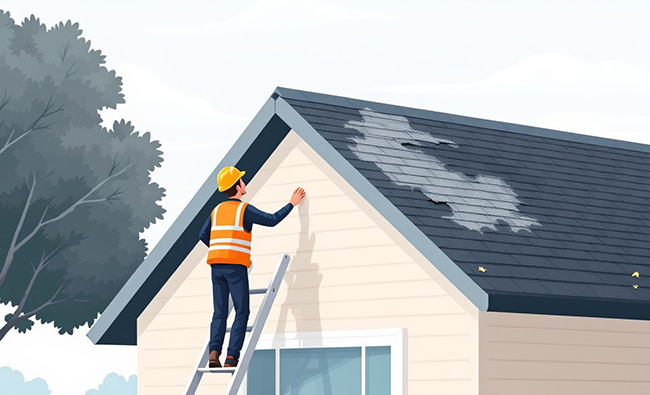
After a hailstorm, conducting a thorough roof inspection is essential to identify any obvious damage. Begin by visually inspecting your roof from the ground, looking for shingles, asphalt granules, fallen gutters, and other debris. Check for interior water damage in areas like the attic, living space ceilings, cabinets, and chimneys. Recognizing the types of hail damage—cosmetic and functional—is essential for assessing the overall impact on your roof.
For safety, use binoculars to check the roof condition without climbing up. Regular roof inspections, especially before hail season, can help identify vulnerabilities and prevent significant damage to your entire roof. Call a professional immediately if you find obvious damage to your roof.
Removing debris from your roof can also help prevent additional damage during hail events.
Safety Precautions
Always prioritize safety during a roof inspection by wearing proper safety gear and ensuring you have the necessary knowledge. Wear soft-soled shoes or roofing boots for safety when inspecting a roof for hail damage. It’s not recommended to get on your roof during an inspection unless you have experience in roof repair, as a lack of knowledge may lead to accidents.
To prevent potential injuries, avoid climbing onto your roof after a hailstorm. Expert help is available to ensure safe and thorough hail damage roof inspections.
Visual Inspection Checklist
After hail damage, inspect shingles, gutters, and roof vents for potential problems. Indicators of hail damage on shingles include missing shingles, granule loss, and hail marks suggesting compromised integrity.
During a gutter inspection, look for dents, dings, or sitting granules, as these can indicate damage. Check roof vents for dents and ensure they are not blocked; inspect flashing and metal valleys for hail impacts. A thorough visual inspection helps spot damage early and prevents further complications.
The Impact of Hail on Different Roofing Materials
Hail damage can result in both functional impairments and cosmetic issues on roofing materials. Functional hail damage affects the integrity and longevity of the roof, while cosmetic hail damage does not affect its performance. The impact of hail on roofing materials varies based on size, density, and the specific material’s characteristics.
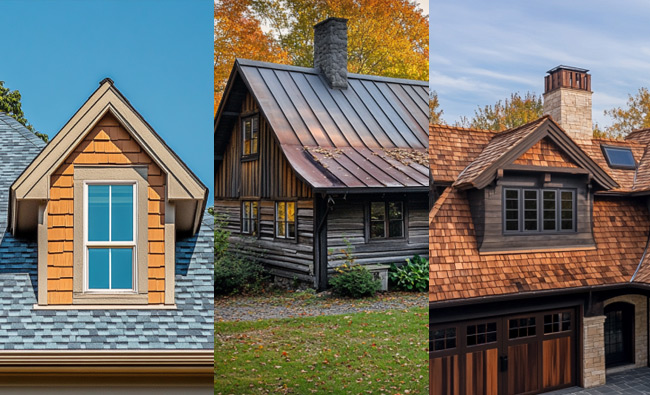
Asphalt Shingles
Signs of hail damage on asphalt shingles include bruised areas that resemble soft, black marks, pock marks or craters, and visible cracks or missing shingles. Hail can cause asphalt shingles to suffer from granule loss, exposing the underlying felt and increasing the risk of water damage and UV exposure.
Metal Roofing
Metal roofs are more durable than traditional asphalt shingles, providing better protection against hail damage. Dents on metal roofs can indicate hail impact, altering the roof’s appearance without necessarily compromising its integrity.
Wood Shingles
Hail can cause wood shingles to split, often resulting in cracks that may not show edge deterioration. Hail damage to wood shingles might include impact marks or dents, particularly near splits.
When to Call a Professional Roofing Contractor
If you observe visible damage after a severe hailstorm, engaging a professional contractor for a comprehensive evaluation is prudent. A roofer should review wind and hail damage immediately to prevent further issues.
It’s important for the contractor to inspect the roof with the insurance adjuster as the insurance company looks for reasons NOT to replace the roof. Call a professional contractor for a free roof inspection if you suspect hail damage.
Benefits of Professional Inspections
Professional roofing contractors provide expert assessments of hail damage. Professional inspectors can uncover damage that might not be visible to an untrained eye, ensuring thorough and accurate assessments.
At least two yearly professional inspections help identify vulnerabilities before they become serious issues. The National Roofing Contractors Association recommends bi-annual inspections for effective early detection of potential roofing issues.
Finding a Reputable Roofing Company
Seek out roofing inspectors with experience and a good reputation. Choose a reputable roofing contractor with experience in hail damage repairs.
Before hiring for hail damage assessments, verify a contractor’s credentials and insurance.
Navigating Insurance Claims for Hail Damage

The claims process can be complex, but it’s essential to understand homeowners insurance policies that often cover hail damage. Policies typically provide payment through a two-step process involving an initial Actual Cash Value payment and a subsequent depreciation payment.
Public adjusters work for policyholders independent of insurance companies. If you experience hail damage, it is advisable to call a public adjuster to assist with your insurance claim. Public adjusters advocate for policyholders in insurance claims to help secure fair compensation.
Documenting Damage
A camera is essential for documenting hail damage and ensuring safety during the inspection. Thorough photographs and detailed notes of roof damage are crucial when filing a claim. Roofing contractors document storm damage using photos and detailed notes.
Contractors can assist homeowners in inspecting and documenting hail damage if needed. If damage is found during the inspection, contractors provide pictures of the damage to submit to the insurance company.
Working with Your Insurance Company
Homeowners must inform their insurance provider promptly after noticing damage to initiate the claims process.
Role of Public Adjusters
Public adjusters are independent advocates for policyholders, helping them navigate the claims process effectively. They help negotiate a fair deal with the insurance adjuster to ensure adequate compensation for the damage. Public adjusters may charge a fee based on a percentage of the claim amount, which can impact the funds available for repairs.
Public adjusters guide homeowners through the entire insurance claims process, ensuring fair compensation.
Preventing Future Hail Damage
Routine maintenance identifies and addresses potential roof issues before they become significant problems. Impact-resistant materials minimize damage during future hail storms, adding an extra layer of protection for your roof.
Trimming trees near your roof can prevent branches from causing damage during hail storms. Storm shutters effectively protect windows and parts of your home from hail impact.
Regular Roof Maintenance
Regular inspections and maintenance ensure your roof can withstand hail storms and other damaging weather. Regular roof maintenance is crucial as it identifies and repairs potential problems before they lead to significant damage.
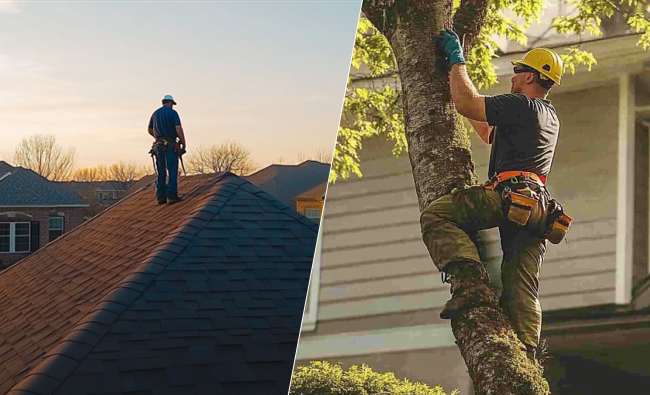
Regular roof maintenance involves inspecting for damage, cleaning gutters and downspouts, and repairing loose or damaged shingles. Trimming trees and shrubs around your property can prevent falling branches during hail storms, contributing to roof maintenance.
Impact-Resistant Roofing Materials
Impact-resistant roofing materials are engineered to endure hailstone hits and protect against such weather events. Using impact-resistant roofing materials prevents hail damage in the long term.
Concrete tiles are a durable option for impact-resistant roofing, lasting for many years.
Additional Protective Measures
Trim trees or shrubbery around your home to prevent falling branches from causing roof damage during hail storms. Storm shutters made of metal or wood provide effective protection against hail impact. Implementing additional protective measures can significantly mitigate potential hail damage to your roof.
Proactive steps like trimming trees and installing storm shutters safeguard your roof from hail damage.
Hail Inspection Summary
In conclusion, understanding and addressing hail damage is crucial for maintaining the integrity and longevity of your roof. Prompt inspections after a hailstorm, recognizing the signs of damage, and knowing when to call in professionals can save you from costly repairs and further complications. Different roofing materials respond to hail damage in various ways, and being aware of these differences can help you make informed decisions about your roofing needs.
Preventing future hail damage involves regular roof maintenance, using impact-resistant materials, and implementing additional protective measures. By staying proactive and informed, you can protect your home from the devastating effects of hailstorms and ensure your roof remains strong and durable for years to come.
Hail Damage Frequently Asked Questions
What are the first signs of hail damage on my roof?
The first signs of hail damage on your roof often include dents and cracks in shingles, as well as missing shingles and torn flashing. Additionally, look for dents on gutters, roof vents, and downspouts as further indicators of potential damage.
How can I safely inspect my roof for hail damage?
To safely inspect your roof for hail damage, use binoculars from the ground for a preliminary assessment, and only climb onto the roof if you have the proper knowledge and safety measures in place. Always prioritize your safety during the inspection.
When should I call a professional roofing contractor?
You should call a professional roofing contractor after severe weather events, like hailstorms, or if you notice visible damage to your roof. It’s essential to get a thorough evaluation to ensure your roof’s integrity.
How do I document hail damage for an insurance claim?
Documenting hail damage for an insurance claim requires taking clear photographs and detailed notes of the damage. If you cannot do it yourself, consider hiring contractors to assist with the inspection and documentation for submission.
What preventive measures can I take to protect my roof from future hail damage?
To protect your roof from future hail damage, implement regular maintenance, opt for impact-resistant roofing materials, trim surrounding trees, and consider installing storm shutters. These measures will help safeguard your roof effectively.
(352) 293-2449